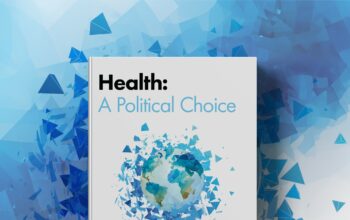Two days to discuss bottlenecks that must be urgently tackled for COVID-19 vaccine output of manufacturers to reach its full potential
A summit was convened in a matter of weeks by Chatham House, in collaboration with COVAX, IFPMA, DCVMN, and BIO, took place on 8-9 March 2021. A discussion document helped inform participants, gave an overview of the current COVID-19 vaccine manufacturing supply chain and identified emerging challenges. While the meeting was conducted under Chatham House rule to facilitate an open discussion, a media briefing followed the summit gave a readout of the key topics discussed. In addition, two key speakers at the event, the new DG of the WTO, Dr Okonjo-Iweala and Secretary of State Matt Hancock of Great Britain published their statements.
A year since the WHO declared the outbreak of the novel coronavirus as a pandemic, we are deeply aware that we are not only in a war against the virus, but also in a war against time: we know that no one is safe until everyone is safe.
We have reason to look back and feel proud of the valiant efforts made over the past twelve months to ensure science delivers. This has been achieved through unprecedented partnership between and across the private sector from industrialized and developing countries, international organizations, philanthropists, governments, academia and civil society. We’ve seen a game-changing breakthrough for a new technology – mRNA vaccines; more than half a dozen safe and highly effective vaccines developed in record time and already administered to hundreds of million people around the world, and light at the end of the tunnel to retrieve us from pandemic fatigue.
The unprecedented scaling up of vaccine manufacturing, from zero to billions of doses in record time, has led to shortages that are impacting the entire vaccine supply chain. To put the challenge in perspective: pre-COVID-19 global vaccine manufacturing capacity was 3.5 billion doses per year, 5 billion if seasonal flu shots are included. This year, for COVID-19 alone, we talk about a capacity of almost 10 billion, likely to be higher if booster shots to deal with new variants are added.
We should not be surprised that this scale up of biological processes has its difficulties and there will be bumps along the road. Not least, because when scaling up exponentially the number of doses, it put a huge strain on the productive and yields produced by the new manufacturing lines put in place for these new vaccines. More than doubling of worldwide annual vaccine production puts a huge strain on the hundreds of raw materials and components such as lipid nanoparticles for the mRNA vaccines, the adjuvants to boost the vaccines, the giant plastic bags for single use bioreactors, glass vials, or the single use filters. These strains on the whole manufacturing supply chain can be further challenged by scarcity of expert technicians, by scarcity of materials, compounded by the interdependencies of materials needed for other biologicals, vaccines or cancer drugs.
We see the impatience of people and governments around the world who are eager to get their COVID-19 jab today and not tomorrow. The summit was an opportunity to discuss bottlenecks that we need to tackle urgently to expand manufacturing capacity. During the 2-day event, I saw the willingness of everyone involved to leave no stone untouched. Manufacturers, suppliers, international organisations, regulators, governments, are working together in a new and creative way, and I’m confident we will see new players coming in with their manufacturing know-how and capacities. Going forwards, we will be eager to explore what we can do to address the areas identified as needing action:
- Free flow of goods and workforce;
- Continue technology transfer and manufacturing partnerships between innovators and manufacturers to scale up and scale out COVID19 vaccine capacity;
- Better demand forecasting and inventory management of raw materials and critical consumables;
- Support from the highest political level is needed;
- Value of regulatory harmonization and streamlining to accelerate manufacturing capacity and supply;
- Better production, demand and supply, forecast and visibility;
- Give consideration to the potential impacts of COVID-19 production on non-COVID products.
We will be unstinting in our efforts as the goal is clear for all: we need to expand capacity and in a way that promotes equitable access and leaves no one behind.
Author






